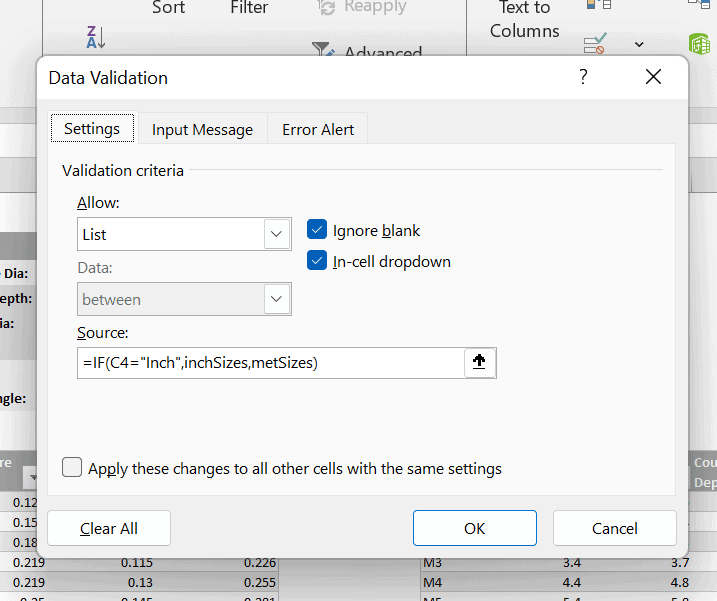When you’re working on engineering projects, precision is key. One area where this is especially true is in selecting fasteners for your designs. Whether you’re dealing with socket cap screws or countersunk screws, getting the specifications right is crucial. This includes determining the correct clearance hole diameter, counterbore depth, and countersink angle, among other parameters. Fortunately, Excel can be a powerful tool to help you manage these details efficiently.
Crafting a Fastener Standards Calculator in Excel
Setting Up Your Spreadsheet
The first step in creating a calculator for fastener standards involves setting up your spreadsheet with the necessary data tables. You’ll need tables for both metric and inch data, depending on the standards you’re working with. Formatting these tables correctly will make it easier to work with your data as you move forward.
For example, after inputting your data into Excel, you should convert your data range into a formatted table by selecting it and using the “Format as Table” option. This allows Excel to treat your data more dynamically.


Elevate Your Engineering With Excel
Advance in Excel with engineering-focused training that equips you with the skills to streamline projects and accelerate your career.
Once your tables are set up, naming them (e.g., TableInch for inch data and TableMetric for metric data) simplifies future formula creation by making references clearer and more intuitive.
Implementing Data Validation
To ensure accuracy and prevent errors in your calculator, implementing data validation is essential. Data validation restricts user input to specific values or ranges, which is particularly useful when users need to select standard sizes or fits that correspond exactly to those available in your tables.
For instance, to enforce selection between “metric” and “inch,” use the Data Validation feature under the Data tab:

Data Validation ensures users can only choose between these two options when specifying the standard they’re working with.
Similarly, setting up dynamic dropdown lists for diameters based on whether “metric” or “inch” has been selected requires a bit more setup involving named ranges and structured references but ensures that users can only select valid diameters from your predefined lists.

Creating Lookup Formulas
With your spreadsheet structured and user inputs validated, the next step involves creating formulas to look up and display relevant fastener specifications based on user selections. VLOOKUP functions are particularly useful here but require careful setup to ensure they reference the correct table and column based on user inputs like standard type (inch or metric) and fit preference (close or normal).
For example:
=VLOOKUP(diameterSelection, IF(standard=”inch”,TableInch,TableMetric), columnIndexNumber,FALSE)
This formula looks up the diameter selected by the user within either the inch or metric table (depending on their earlier selection) and returns information from the specified column related to fit preference.
Remember also to handle potential errors gracefully using IFERROR function wraps around your lookup formulas. This way, if a user makes an incompatible selection combination leading to an error (e.g., selecting a metric size not available in an inch-standard table), they receive helpful feedback instead of cryptic error codes:
=IFERROR(VLOOKUP(…),”Invalid Selections”)
Tying It All Together
By following these steps—setting up structured tables with named ranges, enforcing accurate user inputs through data validation, and carefully crafting lookup formulas—you can create a robust calculator within Excel that streamlines fastener detailing according to various standards. Not only does this save time by automating lookups that would otherwise be done manually but it also reduces errors.
Although we’ve covered some key concepts here that lay the groundwork for building such tools within Excel there’s much more depth to each of these topics than can be fully explored in this post alone.
If you found this overview helpful but want to go deeper with in-depth courses—or just want a detailed step-by-step guide on creating your own fastener calculator — you’ll want to check out what EngineerExcel Academy has to offer. Join us at EngineerExcel Academy today!
